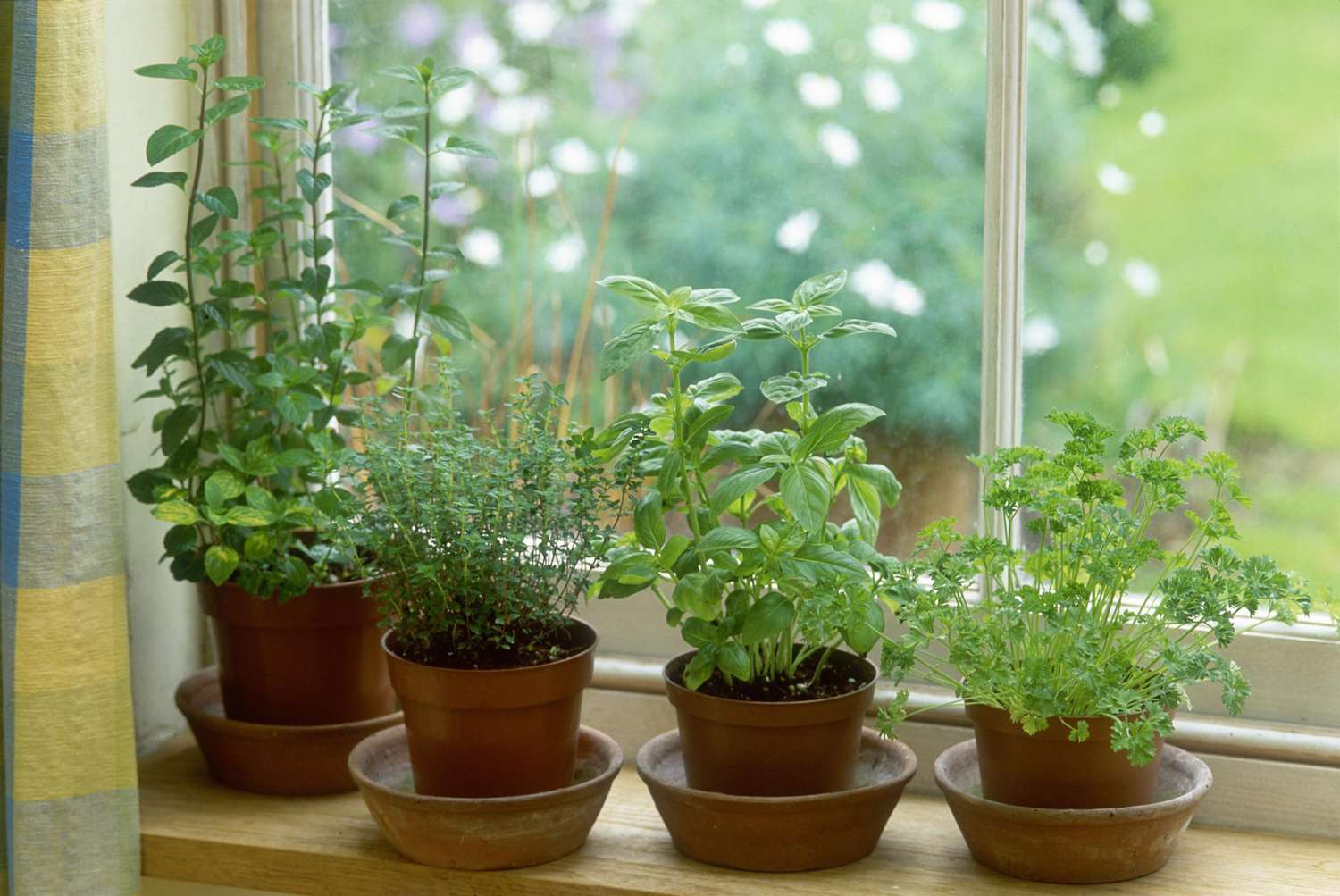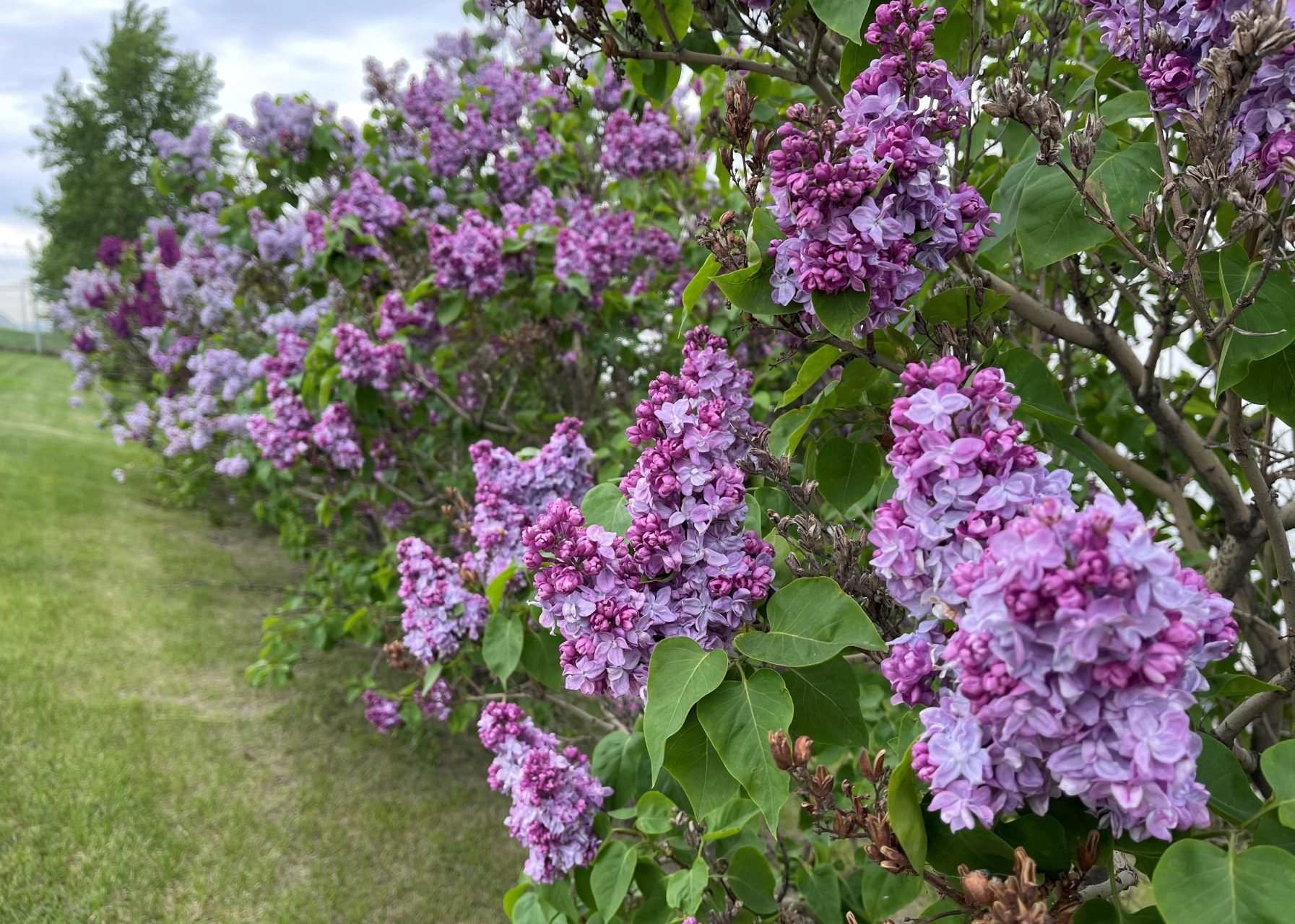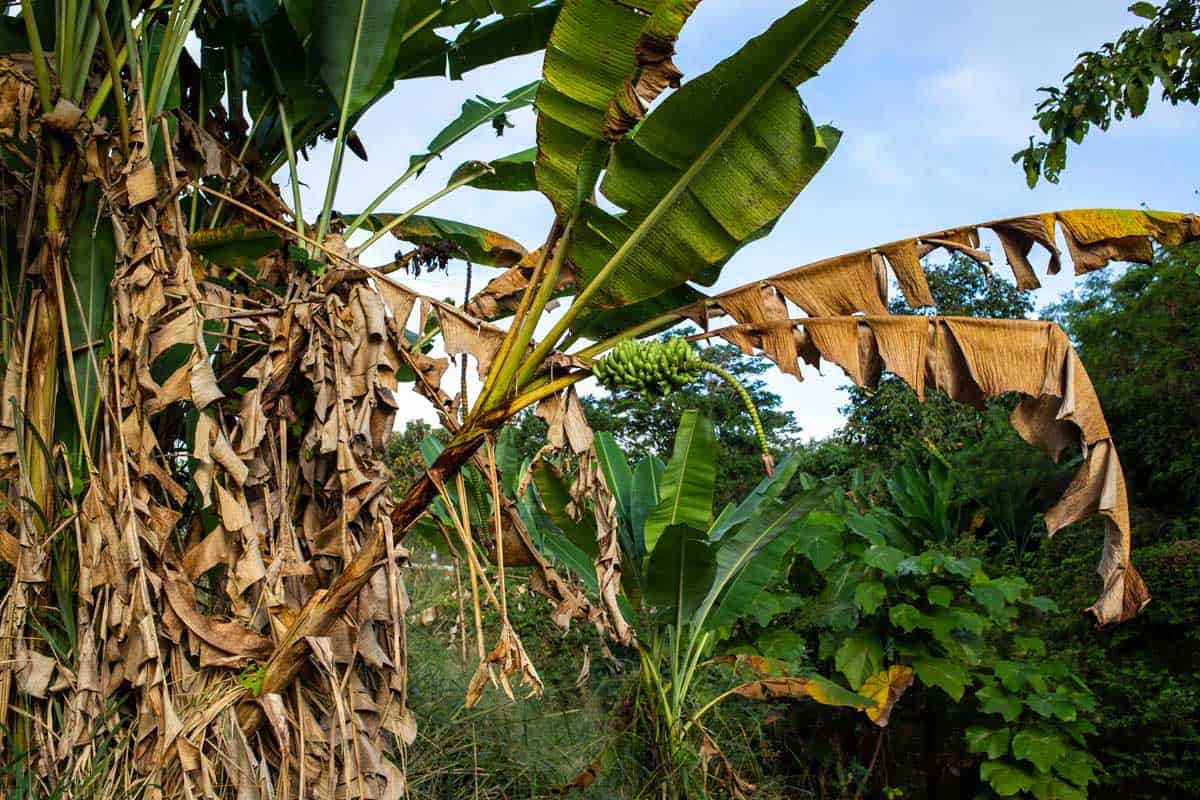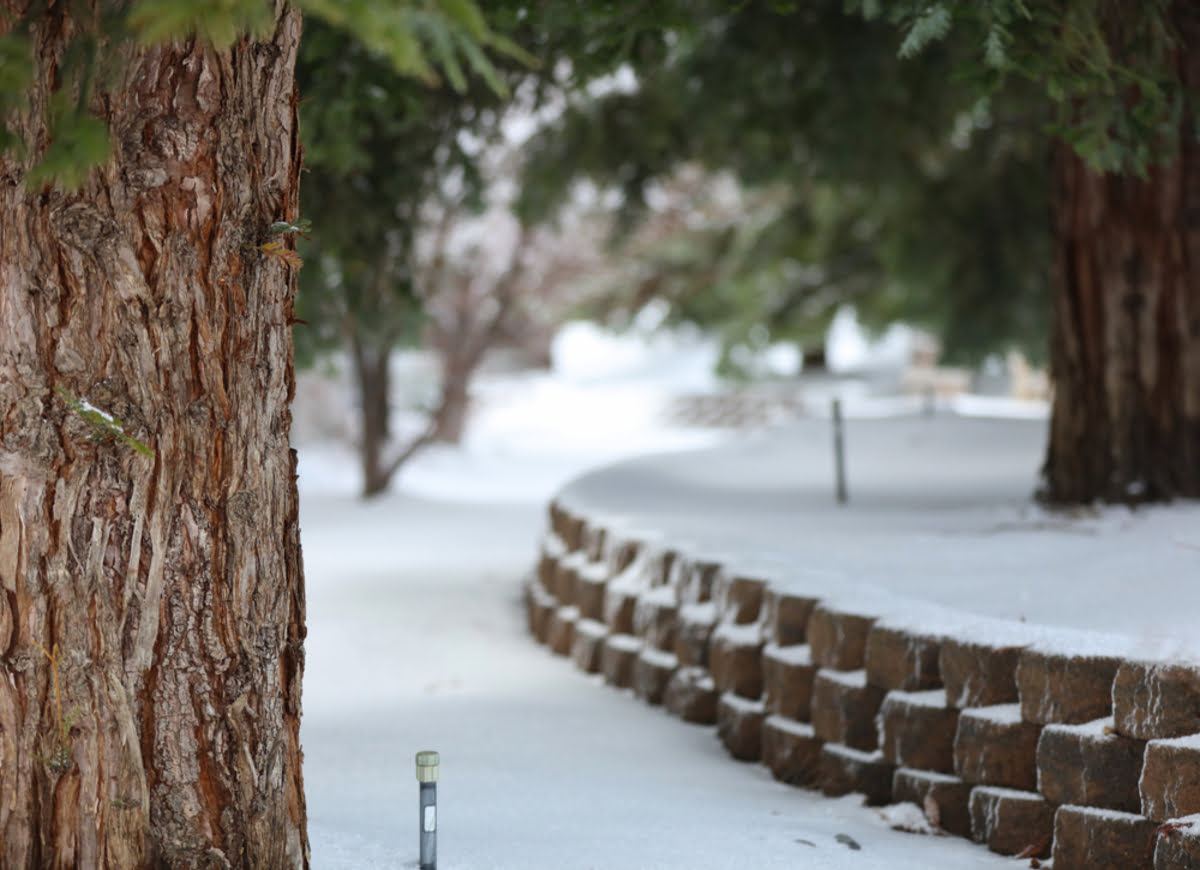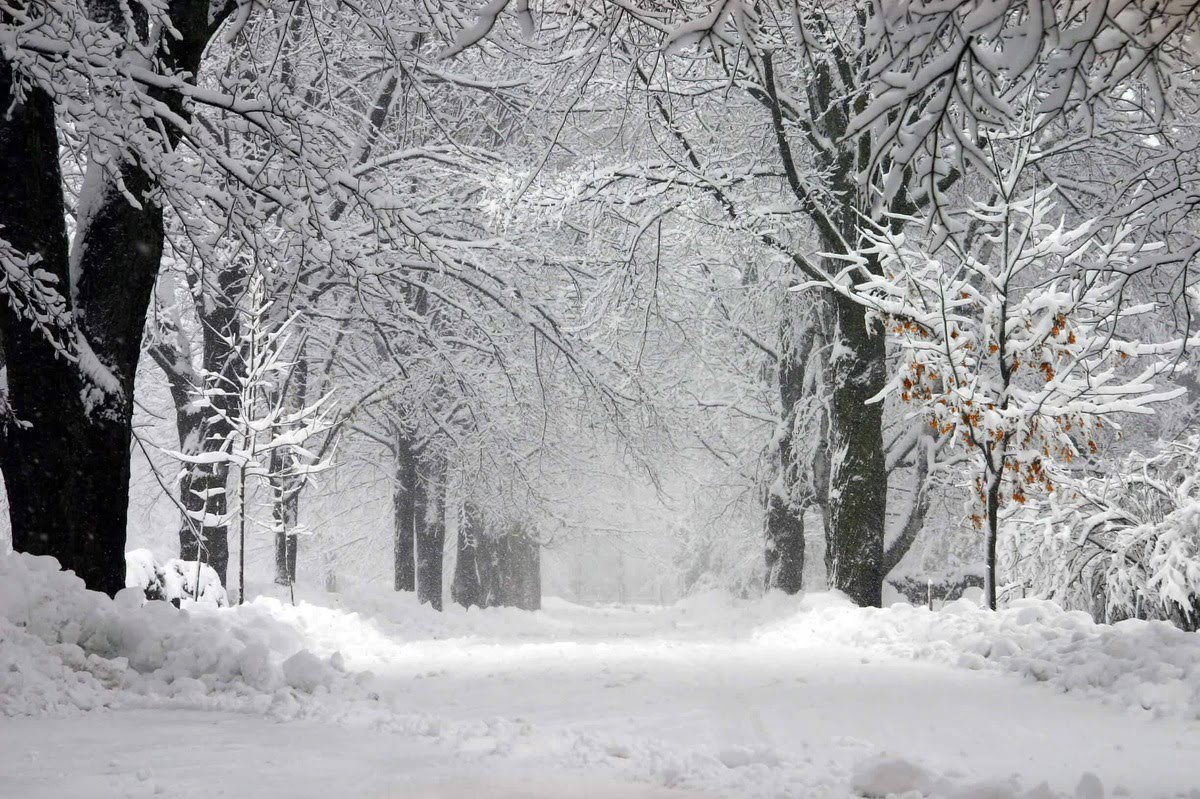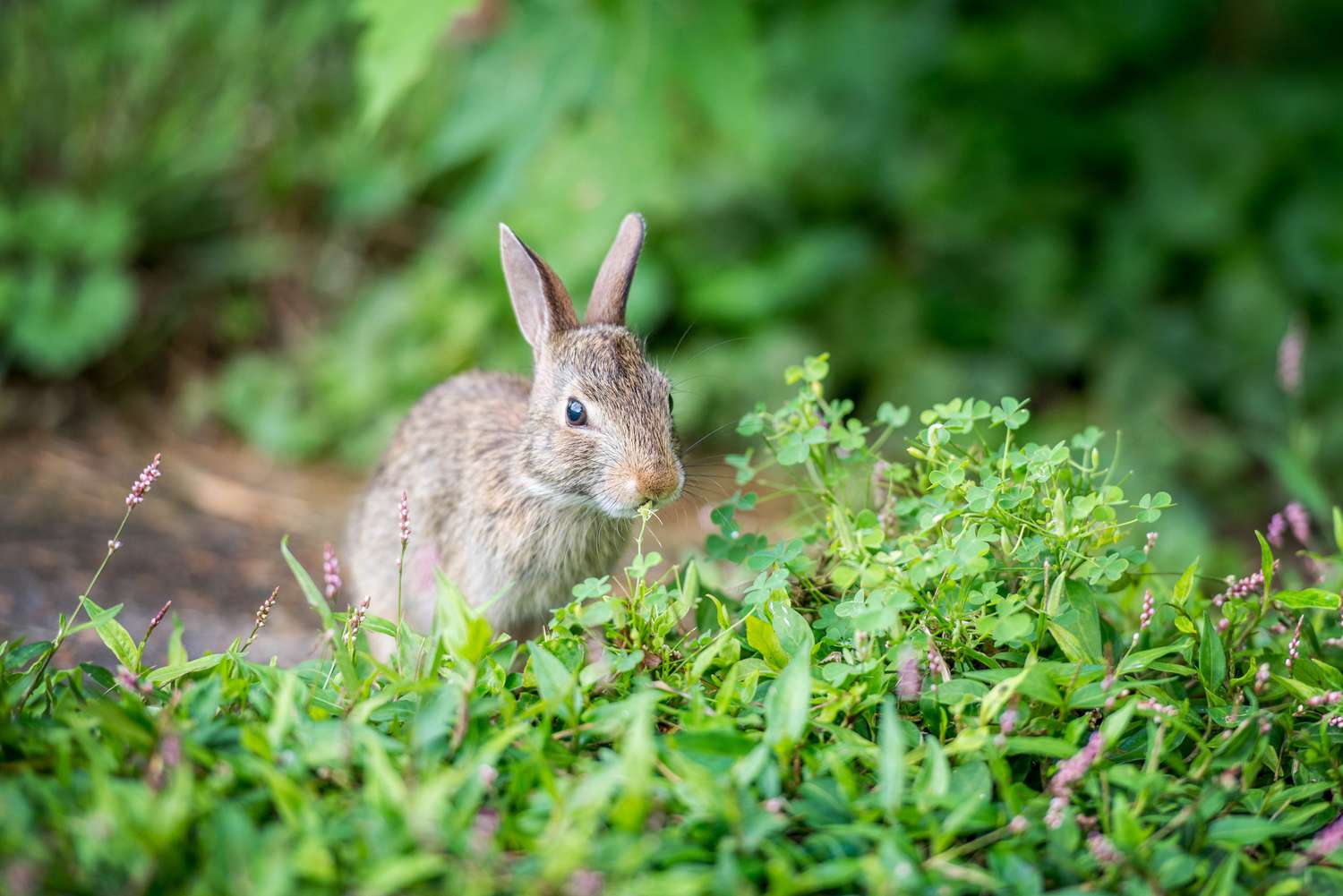Home>Gardening Techniques>Seasonal Gardening>How To Winterize Succulents
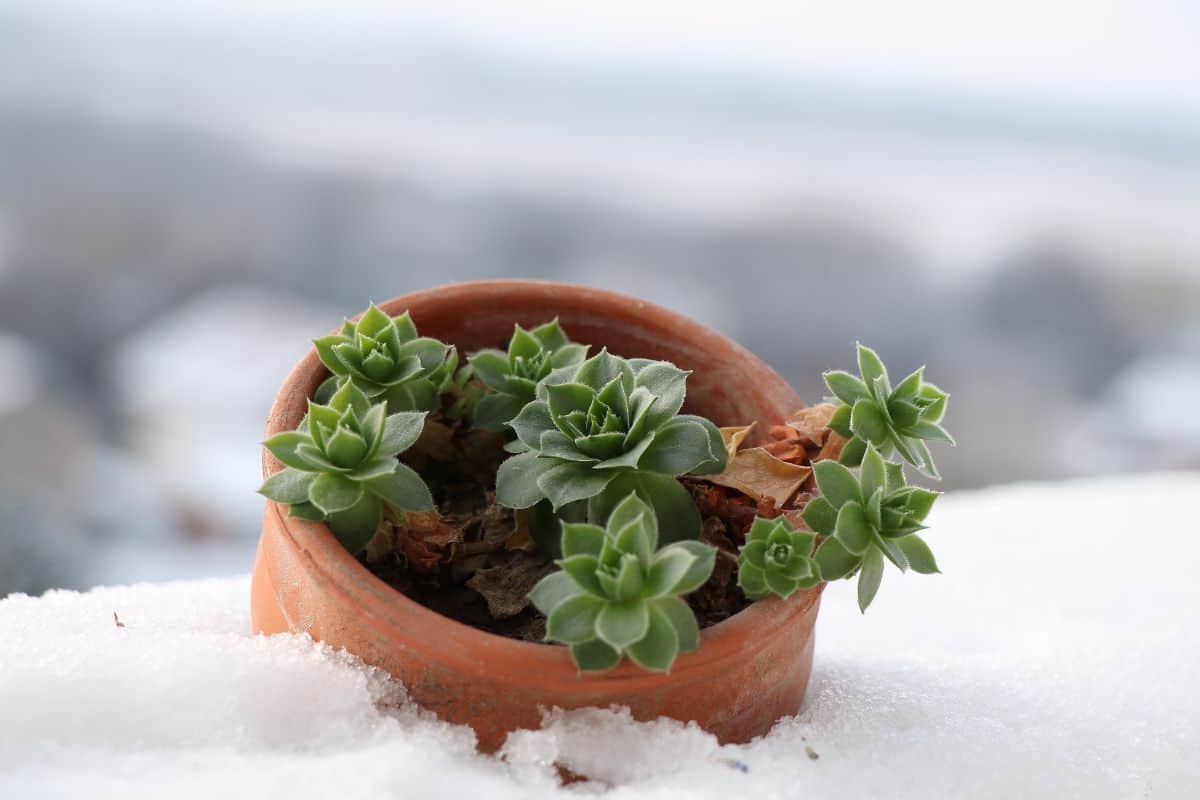

Seasonal Gardening
How To Winterize Succulents
Modified: February 9, 2024
Learn how to properly winterize your succulents with our seasonal gardening tips. Keep your plants protected and thriving through the colder months.
(Many of the links in this article redirect to a specific reviewed product. Your purchase of these products through affiliate links helps to generate commission for Chicagolandgardening.com, at no extra cost. Learn more)
Table of Contents
Introduction
Welcome to the world of seasonal gardening, where each season brings its own unique challenges and opportunities. If you’re a succulent enthusiast, you may be wondering how to properly care for your beloved plants during the winter months. The good news is that with a little knowledge and preparation, you can successfully winterize your succulents and help them thrive through the colder months.
Succulents are best known for their ability to store water in their leaves, stems, and roots, making them incredibly resilient and adaptable to various environmental conditions. However, it’s important to understand that not all succulents are created equal when it comes to cold tolerance. Some varieties can withstand freezing temperatures, while others prefer a more temperate climate.
In this article, we’ll guide you through the process of winterizing your succulents, from choosing the right containers to protecting them from cold temperatures. We’ll also discuss adjusting watering schedules, providing adequate light, monitoring for pests and diseases, and how to bring your succulents indoors if necessary. By following these steps, you’ll give your succulents the best chance of surviving and thriving during the winter season.
So, whether you’re a seasoned succulent enthusiast or a beginner looking to expand your gardening skills, let’s dive into the world of winterizing succulents and ensure that your plants are well-prepared for the colder months ahead.
Understanding Succulents
Before we delve into the specifics of winterizing succulents, it’s important to have a basic understanding of these fascinating plants. Succulents are a diverse group of plants that have adapted to survive in arid conditions by storing water in their leaves, stems, and roots. This water storage adaptation allows them to withstand periods of drought and thrive in locations with limited rainfall.
One of the most distinctive features of succulents is their thick, fleshy leaves and stems. These structures serve as reservoirs for water and help protect the plants from dehydration. The unique anatomy of succulents also contributes to their ability to thrive in various environments, from deserts to mountainous regions.
There is a wide variety of succulent species, each with its own unique growth habit, appearance, and care requirements. Some popular succulents include the Echeveria, Sedum, Aloe, and Crassula. It’s essential to identify the specific type of succulent you have to provide proper care, including winterization techniques.
Furthermore, understanding the natural habitat of your succulent can give you valuable insights into its cold tolerance. Succulents that originate from desert regions, such as the popular Saguaro cactus, are often more resistant to extreme temperatures and can withstand freezing conditions.
On the other hand, succulents that are native to tropical or subtropical climates, like the Jade plant, may not be as cold-hardy. These types of succulents may require extra attention and protection during winter to prevent damage or even death.
When it comes to selecting succulents for your garden or indoor collection, consider factors such as your local climate, available sunlight, and the level of care you’re willing to provide. It’s also helpful to research specific succulent varieties to ensure they align with your gardening goals and the conditions you can provide.
Now that we have a better grasp of what succulents are and the different types available, let’s move on to the next step: preparing succulents for winter.
Preparing Succulents for Winter
As winter approaches, it’s important to take proactive steps to prepare your succulents for the colder temperatures and potential harsh conditions. By following these guidelines, you’ll ensure that your succulents have the best chance of survival and stay healthy throughout the winter season.
1. Assess the health of your succulents: Before winter sets in, thoroughly inspect your succulents for any signs of disease, pest infestations, or other issues. It’s essential to address any problems beforehand to prevent them from worsening during the winter months.
2. Reduce watering frequency: Succulents naturally go into a dormant phase during winter, where their growth slows down. As a result, they require less water. Reduce your watering frequency and let the soil dry out between waterings to prevent overwatering, which can lead to root rot.
3. Stop fertilizing: During winter, it’s best to refrain from fertilizing your succulents. Fertilizers stimulate growth, which is not ideal during the dormant period. Save the fertilizing for the spring when your succulents resume active growth.
4. Protect from extreme temperatures: Succulents are generally tolerant of a wide range of temperatures, but prolonged exposure to freezing temperatures can damage or kill them. If you live in an area with harsh winters, consider bringing your outdoor succulents indoors or providing them with temporary protection.
5. Apply a layer of mulch: Adding a layer of organic mulch around the base of your outdoor succulents can help insulate the soil and provide some protection against temperature fluctuations. Organic materials like straw, wood chips, or dry leaves make excellent mulch options.
6. Prune and remove dead or damaged leaves: Before winter sets in, take the opportunity to remove any dead or damaged leaves from your succulents. Pruning helps promote healthy growth and improves the overall appearance of your plants.
7. Consider using frost cloth or cover: If frost is a concern in your region, you can further protect your outdoor succulents by using frost cloth or covers specifically designed for plants. These protective coverings help retain heat and provide an additional layer of insulation.
By taking these preparatory steps, you’ll ensure that your succulents are ready to face the challenges of winter. Now, let’s discuss the importance of choosing the right containers for your succulents.
Choosing the Right Containers
When it comes to growing succulents, the choice of containers plays a crucial role in their overall health and well-being. The right container will provide adequate drainage, proper airflow, and allow for optimal root development. Here are some factors to consider when selecting containers for your succulents:
1. Drainage: Succulents are highly sensitive to overwatering, and good drainage is essential to prevent root rot. Look for containers with drainage holes at the bottom to allow excess water to escape. If you can’t find a container with drainage holes, consider drilling some yourself.
2. Size: Choose a container that provides enough space for your succulent to grow. Avoid containers that are too large, as excess soil can retain moisture and lead to root rot. On the other hand, containers that are too small can restrict root growth and hinder the plant’s overall health.
3. Material: The material of the container can affect the temperature regulation and moisture retention. Terracotta and clay pots are popular choices for succulents as they are porous, allowing for better airflow and evaporation. However, keep in mind that clay pots can dry out quickly, so you might need to water your succulents more frequently.
4. Aesthetics: Consider the aesthetic appeal of the container and how it complements the appearance of your succulents. There is a wide range of container styles, colors, and textures available, allowing you to showcase your personal style and create visually appealing arrangements.
5. Mobility: If you plan to move your succulents frequently or bring them indoors during winter, consider containers that are lightweight and easy to handle. This will make it easier to transport and adjust the positioning of your succulents as needed.
Remember that while choosing the right container is important, it’s equally crucial to select the proper soil mix for your succulents. Succulents require well-draining soil that allows excess water to escape, so be sure to use a mix specifically formulated for succulents or make your own by combining potting soil with perlite or sand.
With the right containers and soil mix, your succulents will have a strong foundation to thrive and grow. Next, let’s explore how to protect your succulents from cold temperatures.
Protecting Succulents from Cold Temperatures
As winter arrives, it’s important to take precautions to protect your succulents from the potentially damaging effects of cold temperatures. While some succulents can tolerate mild frosts, extended periods of freezing temperatures can be detrimental. Here are some key strategies to keep your succulents safe during the winter:
1. Bring indoor-susceptible succulents indoors: If you have succulents that are not frost-tolerant, it is best to bring them indoors before the temperatures drop. Find a bright spot near a window where they can still receive adequate sunlight. Ensure the indoor environment is not too warm or dry, as succulents prefer cooler temperatures and moderate humidity.
2. Provide insulation for outdoor succulents: For succulents that are left outdoors during winter, you can provide additional insulation to protect them. Use materials like straw, pine needles, or shredded leaves to create a layer around the base of the plants. This will help insulate the roots and protect them from freezing.
3. Use frost blankets or cloths: Frost blankets or cloths are specifically designed to protect plants from freezing temperatures. Cover your outdoor succulents with these breathable fabrics when frost is expected. Be sure to remove the covers during the day to allow for proper airflow and sunlight.
4. Utilize temporary indoor shelters: If you have outdoor succulents that are too large to bring indoors, consider creating a temporary shelter using materials like PVC pipes and plastic sheeting. This can provide an extra layer of protection against freezing temperatures and harsh winds.
5. Avoid heavy mulching: While mulching is beneficial for insulating the soil, be cautious not to apply a thick layer that could trap excess moisture. Succulents are prone to root rot, and too much moisture can be harmful. Apply a thin layer of organic mulch around the base of the plants, avoiding direct contact with the stems.
6. Monitor the weather conditions: Stay updated on weather forecasts and be prepared to take immediate action to protect your succulents if temperatures drop unexpectedly. This could include covering plants overnight or moving them to more sheltered areas.
By implementing these protective measures, you can minimize the risk of cold damage and help your succulents survive the winter. However, it’s important to note that even with the best precautions, some succulents may still struggle or suffer damage. Monitoring their health and providing appropriate care is crucial for their well-being.
Next, let’s discuss how to adjust your watering schedule to meet the needs of your succulents during the winter months.
Adjusting Watering Schedule
During the winter months, succulents naturally enter a period of dormancy where their growth slows down. As a result, their water requirements change, and it’s important to adjust your watering schedule accordingly to avoid overwatering and promote healthy root development. Here are some guidelines to help you determine the right watering routine for your succulents during winter:
1. Reduce watering frequency: Succulents are adapted to survive in arid conditions, and they are accustomed to periods of drought. During winter, when the temperature drops and the plants are in a dormant state, they require less water. Reduce the frequency of watering, allowing the soil to dry out between waterings. Overwatering can lead to root rot and other water-related issues.
2. Observe signs of thirst: Succulents have unique ways of showing their need for water. Keep an eye out for signs such as wrinkled or softer leaves, which indicate that the plants are dehydrated and in need of watering. It’s important, however, not to rely solely on visual cues and instead test the moisture level in the soil with your finger before watering.
3. Water deeply but infrequently: When you do water your succulents, ensure that you water deeply until the excess drains out of the drainage holes. This will encourage the roots to grow deeper rather than staying near the surface. However, do not water again until the soil has mostly dried out to avoid waterlogged conditions.
4. Protect against rain: If your succulents are positioned outdoors, be mindful of excessive rainfall during winter. Succulents are prone to rotting when exposed to consistent moisture, so it’s essential to provide protection against heavy rain using covers or by moving them to sheltered areas.
5. Use the “soak and dry” method: The “soak and dry” method is a reliable way to water your succulents. Simply saturate the soil with water until it drains out of the bottom, then allow the soil to dry out completely before watering again. This method ensures that the roots receive adequate hydration while avoiding waterlogged conditions.
Remember that the specific watering needs of your succulents may vary depending on factors such as the type of succulent, the size of the container, and the environmental conditions in your location. It’s important to observe your plants closely and adjust your watering schedule accordingly.
Now that we’ve covered the importance of adjusting your watering routine, let’s move on to discussing the role of adequate light in the winter care of succulents.
Providing Adequate Light
Light plays a crucial role in the overall health and growth of succulents, even during the winter months when daylight hours are shorter. Adequate light is essential to prevent stretching or etiolation, where succulents become weak and leggy as they reach for light sources. Here are some tips to ensure your succulents receive enough light during the winter:
1. Place succulents near windows: Position your succulents near windows that receive the most sunlight. South-facing windows typically provide the brightest light, followed by east and west-facing windows. Rotate your plants regularly to ensure even exposure to sunlight and promote balanced growth.
2. Supplement with grow lights: If natural light is limited or insufficient, consider using artificial grow lights to supplement the lighting for your succulents. LED or fluorescent grow lights with a spectrum that mimics natural sunlight are ideal. Position the lights about 6-12 inches above the plants and keep them on for 10-12 hours a day.
3. Watch out for temperature fluctuations: While it’s essential to provide adequate light, be cautious about placing your succulents in locations near cold windows or drafts. Extreme temperature fluctuations can stress the plants and potentially harm them. Ensure there is a balance between light exposure and temperature control.
4. Monitor for signs of insufficient light: If your succulents are not receiving enough light, they may exhibit signs such as elongated stems, pale or faded colors, and reduced growth. These are indications that they are not getting the light they need. If this happens, adjust the positioning of your plants or increase the duration of artificial lighting.
5. Use reflective surfaces: Enhance the light exposure of your succulents by placing reflective surfaces, such as mirrors or white surfaces, near them. This will help redirect and amplify the available light, maximizing its benefits for your plants.
Remember that different succulent species have varying light requirements. Some succulents, like Sedum and Echeveria, thrive in full sun or bright light, while others, like Haworthia and Sansevieria, can tolerate lower light conditions. Understanding the light preferences of your specific succulents will help you provide them with the optimal lighting conditions they need to thrive.
Now that we’ve discussed the importance of light, let’s move on to the next section: monitoring for pests and diseases.
Monitoring for Pests and Diseases
Just like any other plants, succulents are susceptible to pests and diseases, even during the winter months. It’s crucial to regularly monitor your succulents for any signs of infestation or illness to address the issues promptly. Here are some key points to consider when it comes to monitoring and managing pests and diseases:
1. Inspect your succulents regularly: Take the time to closely examine your succulents for any signs of pests or diseases. Look for common pests like aphids, mealybugs, spider mites, and scale insects, as well as signs of fungal or bacterial infections, such as discoloration or unusual growth patterns.
2. Remove pests by hand: If you spot any pests on your succulents, gently remove them by hand or use a soft brush to dislodge them. For larger infestations, you can spray your plants with a mixture of water and mild dish soap or use organic insecticidal solutions. Avoid using harsh chemical pesticides, as they can harm the succulents.
3. Practice proper sanitation: To prevent the spread of diseases, it’s important to maintain good sanitation practices. Regularly remove any fallen leaves, debris, or dead plant material from the vicinity of your succulents. This helps eliminate hiding places for pests and reduces the risk of fungal or bacterial infections.
4. Quarantine affected plants: If you notice signs of pests or diseases on any of your succulents, it’s best to isolate them from your other plants. Quarantining affected plants helps minimize the risk of further infestation or spread of diseases to the rest of your collection.
5. Provide good air circulation: Proper airflow around your succulents is essential for preventing the development and spread of fungal diseases. Avoid overcrowding your plants and ensure they are not positioned in areas with poor ventilation. This will promote healthy growth and reduce the risk of infection.
6. Adjust watering practices: Overwatering can create a favorable environment for fungal diseases to thrive. Be cautious not to water excessively, and ensure that the soil and succulent leaves have adequate time to dry out between waterings. Watering from the base of the plant can help prevent water from pooling in the center, where fungal diseases are more likely to occur.
By staying vigilant and promptly addressing any pest or disease issues, you can help your succulents stay healthy and vibrant throughout the winter season. Regular monitoring and proactive management will go a long way in maintaining the overall well-being of your succulents.
Now that we’ve covered the importance of monitoring for pests and diseases, let’s move on to discuss pruning and maintenance for your succulents.
Pruning and Maintenance
Pruning and maintenance are important practices to keep your succulents in optimal health and shape. Regularly tending to your succulents helps promote proper growth, removes dead or damaged parts, and keeps them looking their best. Here are some guidelines for pruning and maintaining your succulents:
1. Remove dead or damaged leaves: Dead or damaged leaves not only detract from the appearance of your succulents but can also attract pests or lead to the spread of diseases. Gently remove any yellowed, dried, or mushy leaves using clean, sharp scissors or pruning shears. Make sure to cut close to the base without damaging the healthy parts of the plant.
2. Trim leggy growth: Succulents that have become leggy or stretched out due to insufficient light can benefit from trimming. Pruning back the elongated stems encourages new growth and helps maintain a more compact and aesthetic shape. Cut the stems just above a leaf node to promote branching.
3. Propagate through stem cuttings: Pruning provides the perfect opportunity to propagate your succulents. Many succulents can be easily propagated by taking stem cuttings. Trim a healthy stem just below a node, allow it to callous for a few days, then plant it in well-draining soil and provide proper care for new root development.
4. Monitor for offsets and divisions: Some succulents, like Sempervivum and Aloe, produce offsets or baby plants around the base of the main plant. These can be carefully removed and replanted to create new plants. Additionally, some succulents can be divided, separating clumps of plants into individual specimens for propagation or to promote better growth.
5. Watch for overgrowth: Succulents, especially those that are fast-growing, can sometimes outgrow their containers or the space they are planted in. Consider repotting or transferring these succulents to larger containers to provide them with ample room for root expansion. This will also prevent overcrowding and potential health issues among the plants.
6. Maintain cleanliness: Regularly remove debris, fallen leaves, or dead plant material from the surface of the soil and around the succulents. This practice helps prevent the onset of fungal diseases and eliminates hiding places for pests.
Remember that each succulent variety may have specific pruning requirements, so it’s essential to research the particular needs of your succulent species. Additionally, always use clean and sterilized tools when pruning to prevent the spread of diseases.
With proper pruning and maintenance, you can ensure that your succulents remain healthy, visually appealing, and continue to thrive all winter long. Now, let’s explore options for bringing your succulents indoors during the colder months.
Bringing Succulents Indoors
As the temperatures drop and winter sets in, some succulents may benefit from being brought indoors to provide them with a more favorable environment. While not all succulents need to be moved indoors, certain varieties may require indoor protection to thrive during the colder months. Here are some considerations for bringing your succulents indoors:
1. Assess the cold tolerance of your succulents: Not all succulents are equally suited for indoor conditions. Check the cold tolerance of each succulent species you have to determine if it needs to be brought indoors. Some succulents, like the hardy Sedum and Sempervivum, can tolerate colder temperatures and may not require indoor shelter.
2. Find a suitable indoor location: Look for a bright spot in your home where your succulents can receive adequate sunlight. South-facing windows are ideal, as they provide the most light throughout the day. Alternatively, you can use artificial grow lights to supplement the natural light if needed.
3. Adjust watering and humidity levels: Indoor environments tend to be drier than outdoor conditions, so it’s important to adjust your watering schedule accordingly. Be cautious not to overwater your succulents, as the reduced light levels can slow down their growth and water requirements. Monitor the moisture level of the soil and ensure it dries out between waterings.
4. Provide adequate ventilation: Although succulents prefer a drier climate, it’s still important to provide some level of ventilation to prevent excessive humidity and the risk of fungal diseases. Open windows occasionally or use fans to promote airflow around your succulents.
5. Keep an eye out for pests: When bringing plants indoors, there is always the possibility of introducing pests along with them. Inspect your succulents closely for any signs of pests and take appropriate measures to control and eliminate them if necessary.
6. Gradually adjust to indoor conditions: If your succulents have been outdoors for an extended period, introduce them to indoor conditions gradually. Sudden environmental changes can shock the plants, leading to stress and potential health issues. Start by bringing them indoors for a few hours each day, gradually increasing the duration over a week or two.
Remember to create a comfortable indoor environment for your succulents by maintaining stable temperatures, avoiding cold drafts, and providing adequate light. If your home lacks sufficient light, you can supplement with grow lights to ensure your succulents receive the necessary light intensity.
By bringing your succulents indoors during winter, you can protect them from potential frost damage and create an environment that supports their growth and health. Now, let’s wrap up our discussion.
Conclusion
As the seasons change and winter approaches, proper care and preparation are essential for the health and well-being of your succulents. By understanding the unique needs of these resilient plants and taking proactive steps, you can ensure their vitality throughout the colder months.
Start by understanding the specific requirements of your succulents and their cold tolerance levels. Choose the right containers that provide adequate drainage and airflow, as well as the ideal size for optimal growth. Protect your succulents from freezing temperatures by bringing them indoors or providing temporary shelter, and apply a layer of mulch for insulation.
Adjust your watering schedule to reflect the slower growth and reduced water needs of succulents during winter. Provide adequate light, whether through positioning them near windows or utilizing artificial grow lights, to prevent stretching and maintain healthy growth.
Monitor your succulents closely for pests and diseases, removing any infestations promptly and practicing good sanitation. Regular pruning and maintenance will promote healthy growth and shape, while bringing your succulents indoors can offer a more favorable environment for certain species.
Remember, each succulent is unique, and it’s important to understand its specific care requirements. Research, observation, and a bit of trial and error will help you provide the best care for your succulents during the winter months.
By implementing these tips and suggestions, you’ll create an environment that supports the longevity and vibrancy of your succulents. Enjoy the beauty and diversity of these fascinating plants as they continue to bring life and joy to your indoor and outdoor spaces, even in the coldest of seasons.



